i' am implementing an algorithm of volume rendering "GPU ray casting single pass". For this, i used a float array of intensity values as 3d textures ( this 3d textures describes a regular 3d grid in spherical coordinates ).
Here there are example of array values:
75.839354473071637,
64.083049468866022,
65.253933716444365,
79.992431196592577,
84.411485976957096,
0.0000000000000000,
82.020319431382831,
76.808403454586994,
79.974774618246158,
0.0000000000000000,
91.127273013466336,
84.009956557448433,
90.221356094672814,
87.567422484025627,
71.940263118478072,
0.0000000000000000,
0.0000000000000000,
74.487058398181944,
..................,
..................
(Here the complete data:[link] (https://drive.google.com/file/d/1lbXzRucUseF-ITzFgxqeLTd0WglJJOoz/view?usp=sharing))
the dimensions of spherical grid are (r,theta,phi)=(384,15,768), and this is the input format for load textures:
glTexImage3D(GL_TEXTURE_3D, 0, GL_R16F, 384, 15, 768, 0, GL_RED, GL_FLOAT, dataArray)
And This is an image of my visualization:
The problem is that the visuization should be a disk, or at least a similar form.
i think that the problme is i do not specify correctly the coordinates for textures( in spherical coordinates).
this is the vertex shader code:
#version 330 core
layout(location = 0) in vec3 vVertex; //object space vertex position
//uniform
uniform mat4 MVP; //combined modelview projection matrix
smooth out vec3 vUV; //3D texture coordinates for texture lookup in the fragment shader
void main()
{
//get the clipspace position
gl_Position = MVP*vec4(vVertex.xyz,1);
//get the 3D texture coordinates by adding (0.5,0.5,0.5) to the object space
//vertex position. Since the unit cube is at origin (min: (-0.5,-0.5,-0.5) and max: (0.5,0.5,0.5))
//adding (0.5,0.5,0.5) to the unit cube object space position gives us values from (0,0,0) to
//(1,1,1)
vUV = vVertex + vec3(0.5);
}
and this is the fragmen shader code:
#version 330 core
layout(location = 0) out vec4 vFragColor; //fragment shader output
smooth in vec3 vUV; //3D texture coordinates form vertex shader
//interpolated by rasterizer
//uniforms
uniform sampler3D volume; //volume dataset
uniform vec3 camPos; //camera position
uniform vec3 step_size; //ray step size
//constants
const int MAX_SAMPLES = 300; //total samples for each ray march step
const vec3 texMin = vec3(0); //minimum texture access coordinate
const vec3 texMax = vec3(1); //maximum texture access coordinate
vec4 colour_transfer(float intensity)
{
vec3 high = vec3(100.0, 20.0, 10.0);
// vec3 low = vec3(0.0, 0.0, 0.0);
float alpha = (exp(intensity) - 1.0) / (exp(1.0) - 1.0);
return vec4(intensity * high, alpha);
}
void main()
{
//get the 3D texture coordinates for lookup into the volume dataset
vec3 dataPos = vUV;
//Getting the ray marching direction:
//get the object space position by subracting 0.5 from the
//3D texture coordinates. Then subtraact it from camera position
//and normalize to get the ray marching direction
vec3 geomDir = normalize((vUV-vec3(0.5)) - camPos);
//multiply the raymarching direction with the step size to get the
//sub-step size we need to take at each raymarching step
vec3 dirStep = geomDir * step_size;
//flag to indicate if the raymarch loop should terminate
bool stop = false;
//for all samples along the ray
for (int i = 0; i < MAX_SAMPLES; i++) {
// advance ray by dirstep
dataPos = dataPos + dirStep;
stop = dot(sign(dataPos-texMin),sign(texMax-dataPos)) < 3.0;
//if the stopping condition is true we brek out of the ray marching loop
if (stop)
break;
// data fetching from the red channel of volume texture
float sample = texture(volume, dataPos).r;
vec4 c = colour_transfer(sample);
vFragColor.rgb = c.a * c.rgb + (1 - c.a) * vFragColor.a * vFragColor.rgb;
vFragColor.a = c.a + (1 - c.a) * vFragColor.a;
//early ray termination
//if the currently composited colour alpha is already fully saturated
//we terminated the loop
if( vFragColor.a>0.99)
break;
}
}
How can i specific the coordinates for i will visualize the information in the 3d textures, in spherical cordinates?
UPDATE:
vertex shader :
#version 330 core
layout(location = 0) in vec3 vVertex; //object space vertex position
//uniform
uniform mat4 MVP; //combined modelview projection matrix
smooth out vec3 vUV; //3D texture coordinates for texture lookup in the fragment shader
void main()
{
//get the clipspace position
gl_Position = MVP*vec4(vVertex.xyz,1);
//get the 3D texture coordinates by adding (0.5,0.5,0.5) to the object space
//vertex position. Since the unit cube is at origin (min: (-0.5,- 0.5,-0.5) and max: (0.5,0.5,0.5))
//adding (0.5,0.5,0.5) to the unit cube object space position gives us values from (0,0,0) to
//(1,1,1)
vUV = vVertex + vec3(0.5);
}
And fragment shader:
#version 330 core
#define Pi 3.1415926535897932384626433832795
layout(location = 0) out vec4 vFragColor; //fragment shader output
smooth in vec3 vUV; //3D texture coordinates form vertex shader
//interpolated by rasterizer
//uniforms
uniform sampler3D volume; //volume dataset
uniform vec3 camPos; //camera position
uniform vec3 step_size; //ray step size
//constants
const int MAX_SAMPLES = 200; //total samples for each ray march step
const vec3 texMin = vec3(0); //minimum texture access coordinate
const vec3 texMax = vec3(1); //maximum texture access coordinate
// transfer function that asigned a color and alpha from sample intensity
vec4 colour_transfer(float intensity)
{
vec3 high = vec3(100.0, 20.0, 10.0);
// vec3 low = vec3(0.0, 0.0, 0.0);
float alpha = (exp(intensity) - 1.0) / (exp(1.0) - 1.0);
return vec4(intensity * high, alpha);
}
// this function transform vector in spherical coordinates from cartesian
vec3 cart2Sphe(vec3 cart){
vec3 sphe;
sphe.x = sqrt(cart.x*cart.x+cart.y*cart.y+cart.z*cart.z);
sphe.z = atan(cart.y/cart.x);
sphe.y = atan(sqrt(cart.x*cart.x+cart.y*cart.y)/cart.z);
return sphe;
}
void main()
{
//get the 3D texture coordinates for lookup into the volume dataset
vec3 dataPos = vUV;
//Getting the ray marching direction:
//get the object space position by subracting 0.5 from the
//3D texture coordinates. Then subtraact it from camera position
//and normalize to get the ray marching direction
vec3 vec=(vUV-vec3(0.5));
vec3 spheVec=cart2Sphe(vec); // transform position to spherical
vec3 sphePos=cart2Sphe(camPos); //transform camPos to spherical
vec3 geomDir= normalize(spheVec-sphePos); // ray direction
//multiply the raymarching direction with the step size to get the
//sub-step size we need to take at each raymarching step
vec3 dirStep = geomDir * step_size ;
//flag to indicate if the raymarch loop should terminate
//for all samples along the ray
for (int i = 0; i < MAX_SAMPLES; i++) {
// advance ray by dirstep
dataPos = dataPos + dirStep;
float sample;
convert texture coordinates
vec3 spPos;
spPos.x=dataPos.x/384;
spPos.y=(dataPos.y+(Pi/2))/Pi;
spPos.z=dataPos.z/(2*Pi);
// get value from texture
sample = texture(volume,dataPos).r;
vec4 c = colour_transfer(sample)
// alpha blending function
vFragColor.rgb = c.a * c.rgb + (1 - c.a) * vFragColor.a * vFragColor.rgb;
vFragColor.a = c.a + (1 - c.a) * vFragColor.a;
if( vFragColor.a>1.0)
break;
}
// vFragColor.rgba = texture(volume,dataPos);
}
these are the point that generate a boundary cube:
glm::vec3 vertices[8] = {glm::vec3(-0.5f, -0.5f, -0.5f),
glm::vec3(0.5f, -0.5f, -0.5f),
glm::vec3(0.5f, 0.5f, -0.5f),
glm::vec3(-0.5f, 0.5f, -0.5f),
glm::vec3(-0.5f, -0.5f, 0.5f),
glm::vec3(0.5f, -0.5f, 0.5f),
glm::vec3(0.5f, 0.5f, 0.5f),
glm::vec3(-0.5f, 0.5f, 0.5f)};
//unit cube indices
GLushort cubeIndices[36] = {0, 5, 4,
5, 0, 1,
3, 7, 6,
3, 6, 2,
7, 4, 6,
6, 4, 5,
2, 1, 3,
3, 1, 0,
3, 0, 7,
7, 0, 4,
6, 5, 2,
2, 5, 1};
this is the visualization that it is generated:



